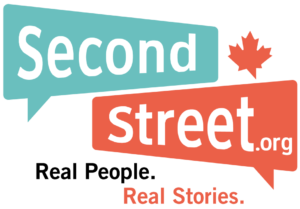Waiting List Deaths Surge in 2020-21

- Government data shows at least 11,581 patients died on waiting lists in 2020-21
- Diagnostic scan waiting list deaths in Ontario up as much as 390%
New research by think tank SecondStreet.org shows that at least 11,581 patients across Canada died in 2020-21 while waiting for surgeries, diagnostic scans and appointments with specialists. The patient deaths identified ranged from people waiting for potentially life-saving treatment (eg. heart operations) to procedures which could have improved their quality of life in their final years (eg. hip operations).
“Waiting lists are at all-time highs due to governments postponing surgeries and diagnostic scans after the pandemic emerged,” said SecondStreet.org President Colin Craig. “But Canadians should note that waiting list deaths have been on the rise for years. Behind these statistics are patients spending their final years in pain, with cloudy vision and other problems. Worse, some are dying simply because the government took too long to provide surgery.”
Highlights from the policy brief include:
- At least 11,581 patients died while waiting for surgeries, procedures and diagnostic scans in 2020-21.
- Data from health bodies that provided surgical waiting list numbers over the past three years shows an 11.7% increase in waiting list deaths since 2018-19.
- Since April 2018, SecondStreet.org has now identified a total of 26,875 cases where patients died while waiting for surgery and diagnostic scans from the government.
- Nova Scotia provided the most comprehensive data this year. During the 2020-21 period, 51 patients died while waiting for surgeries that could have potentially saved their lives. “Just over three quarters” had waited longer than the maximum wait time.
- Since 2015-16, Ontario Health data shows a 390% increase in CT scan waiting list deaths, a 370% increase in MRI scan waiting list deaths and an 11% increase in surgical waiting list deaths.
“Across Canada, parents can choose between putting their kids in public schools or private schools,” added Craig. “Studies show that if we took that approach with health care, and gave patients more choice outside of the public system, we could reduce patient suffering.”
To view SecondStreet.org’s new policy brief – click here
DATA FROM HEALTH REGIONS / HOSPITALS:
– BC – Interior Health – click here for surgical data and here for diagnostic scan data
– BC – Fraser Health – click here
– AB – Alberta Health Services – click here
– SK – Ministry of Health – click here
– MB – Prairie Mountain Health – click here
– MB – Winnipeg RHA – click here
– ON – Ontario Health – click here
– QC – Quebec City (Capital Nationale) – click here
– NB – Department of Health – click here
– NS – NS Health Authority – click here
– PEI – Health PEI – click here
ONTARIO HOSPITALS:
– Hospital for Sick Children – click here for surgical data and here for diagnostic scan
– Guelph General Hospital – click here
– Trillium Health Partners – click here
– Queensway Carleton Hospital – click here
– Sinai Health – click here
– Southlake Regional Health Centre – click here
– Mackenzie Health – click here
– Scarborough Health Network – click here
– London Health Sciences – click here
– Hamilton Health Sciences – click here
– The Ottawa Hospital – click here
– Thunder Bay Regional HSC – click here
– Lakeridge Health (Oshawa) – click here
– Markham-Stouffville Hospital – click here
– Hopital Montfort – click here
– Halton Health Care – click here
– Niagara Health Systems – click here
Note: For 2019-20 data click here and here for 2018-19 data.
You can help us continue to research and tell stories about this issue by making a donation or sharing this content with your friends. Be sure to sign up for our updates too!

